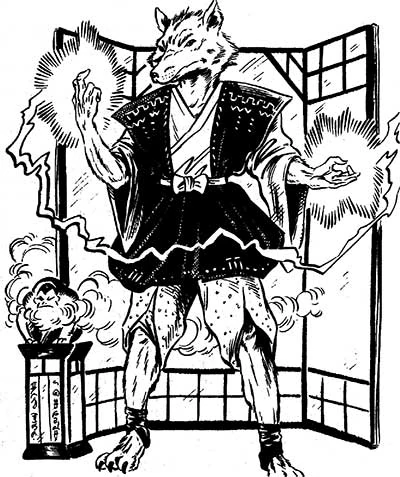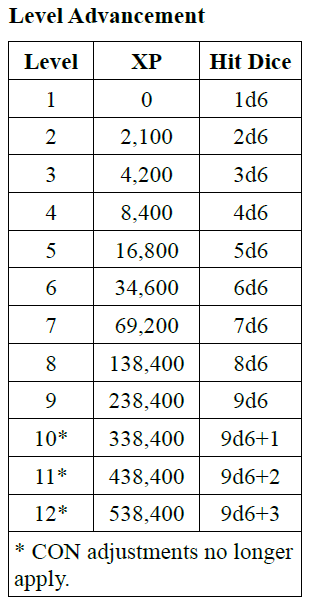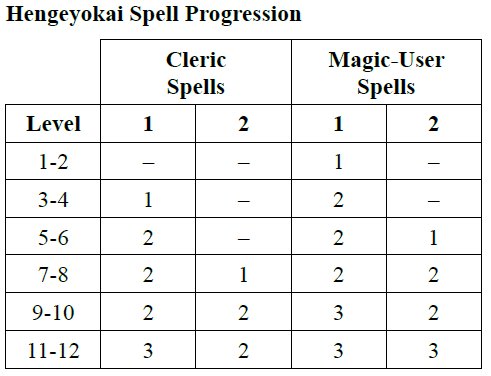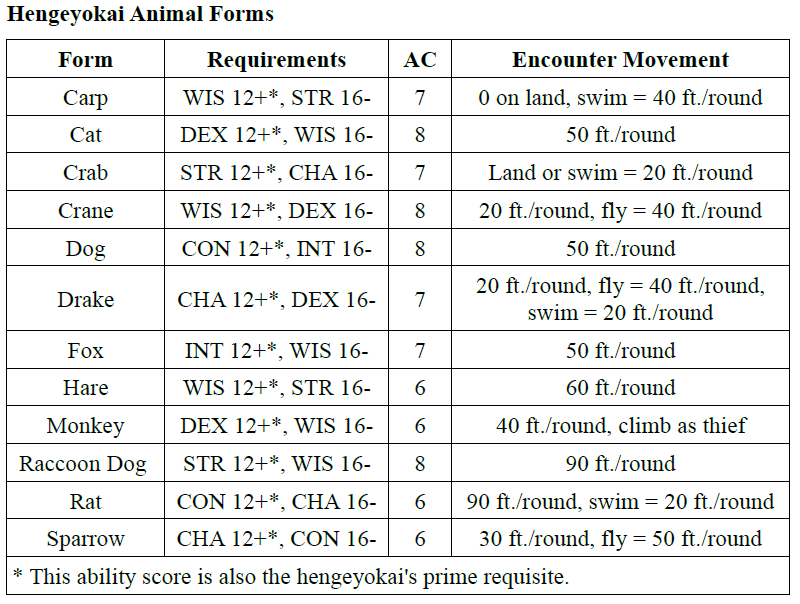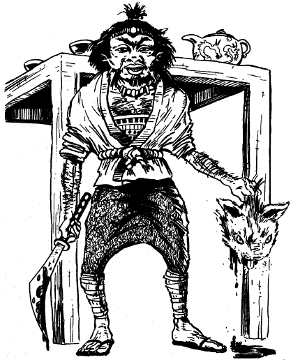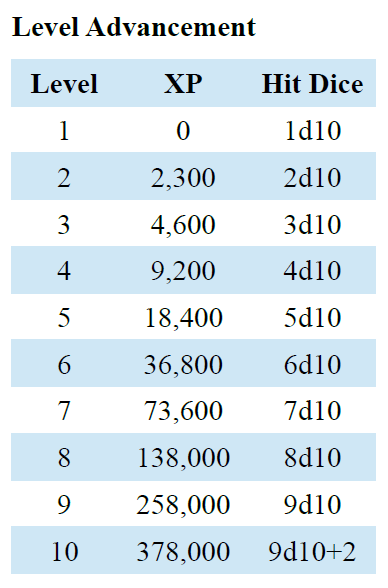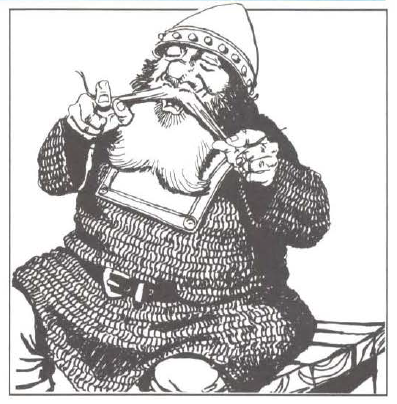Hengeyokai Class (B/X D&D)
After being away for a bit, it’s time for another installment using Erin D. Smale’s BX Options: Class Builder and TSR’s Oriental Adventures. The hengeyokai is a race-as-class option for B/X D&D. As before, much of the descriptive text for the class comes from the latter source (albeit with some editing).
Nota Bene: Those previous links are affiliate links. If you click and purchase, I get a few coppers.
Hengeyokai
Hengeyokai, intelligent creatures who can shape change, often live on the fringes of human-settled lands. Several subraces exist, each a different type of animal. They are found throughout the world, usually on the fringes of human-settled lands. The ability to change shape is natural to hengeyokai. They are not lycanthropes. A player who decides to have a hengeyokai player character must have the minimum and maximum required scores for the race depending on the character’s animal form. The traditional forms are carp, cat, crab, crane, dog, drake, fox, hare, monkey, raccoon dog, rat, and sparrow. A hengeyokai can assume any one of three shapes: its animal form, its human form, and a hybrid form that combines both animal and human features. The latter form is the hengeyokai’s natural form.
Requirements: See Hengeyokai Animal Forms table.
Prime Requisite: See Hengeyokai Animal Forms table.
Hit Dice: 1d6
Maximum Level: 12
Armor: None, but may use shields
Weapons: Any
Languages: Hengeyokai, Trade Tongue
Restrictions
Stronghold: When hengeyokai reach 9th level, they may build strongholds.
Abilities
Change Form: Hengeyokai can change from animal form to hybrid form to human form. This ability is limited, however. The number of times a hengeyokai’s level equals the number of times a hengeyokai can change forms in one day. For example, a 1st-level hengeyokai can change from human to animal form once in a day. The 1st-level hengeyokai then has to remain in animal form until the next day. A 3rd-level hengeyokai can change form three times in one day, et cetera.
Changing form requires one complete round during which the character can do nothing else. Clothing and equipment do not change form along with the hengeyokai. In each form, the hengeyokai has certain advantages and disadvantages. In all cases, however, the character’s level and ability scores are unchanged.
Damage taken in one form carries over to other forms. So too with ongoing effects, such those of certain spells.
Form – Animal: While in animal form, hengeyokai have the AC and movement shown on the Hengeyokai Animal Forms table below. Hengeyokai are small-sized creatures in animal form, and they are almost indistinguishable from a normal animal, at least in terms of appearance. In animal form, hengeyokai have 90-foot range infravision, and they can speak with animals (including other hengeyokai in animal form) at will. Of course, in animal form, hengeyokai have limited to no ability to use equipment. They cannot cast spells in animal form, nor can they speak normal languages.
Also, in animal form, hengeyokai have half as many hit points maximum as normal. Thus, a 1st-level hengeyokai with 6 hit points has at most 3 hit points in animal form. Since damage carries over from one form to the other, a hengeyokai damaged in hybrid form or human form might not be able to assume animal form without becoming unconscious or even dying.
Form – Human: Hengeyokai in human form are indistinguishable from normal humans except for some tell-tale distinctive feature carried over from animal form. For example, a monkey hengeyokai might have long arms. In human form, hengeyokai can cast spells, use equipment, et cetera, but they do not have infravision and lose the ability to speak with animals at will.
Form – Hybrid: This is the natural form of hengeyokai, being a humanoid with animal features and characteristics. For example, a crane hengeyokai has feathers and a beak. In hybrid form, hengeyokai have no special movement rates. They can speak with animals (including animal-form hengeyokai) at will as well as speak languages normally. They have infravision with a 60-foot range. Hengeyokai in hybrid form can use equipment normally as well as cast spells.
Combat: Hengeyokai make attacks as clerics and make saving throws as magic-users.
Spells: Hengeyokai are attuned to the clerical and magic-user spells. They receive cleric spells from their innate connection to the spirit world. They learn magic-user spells the same way as a magic-user, to include keeping a spellbook.
